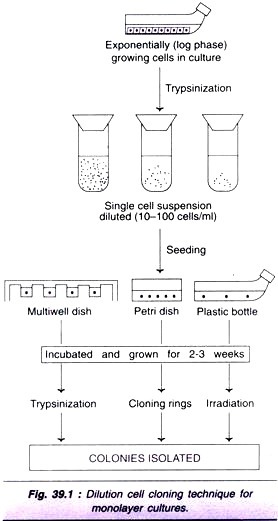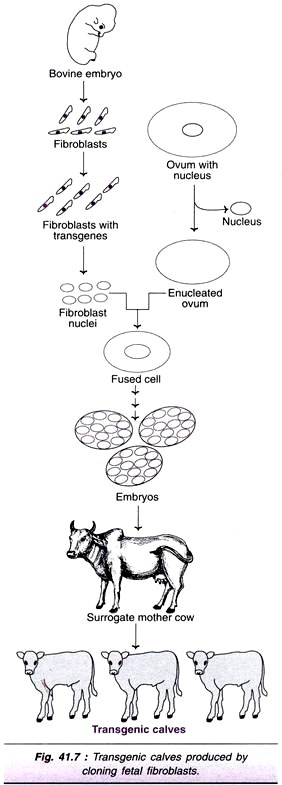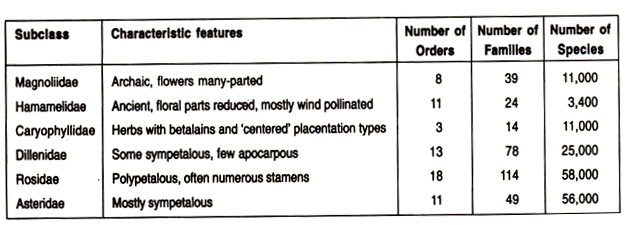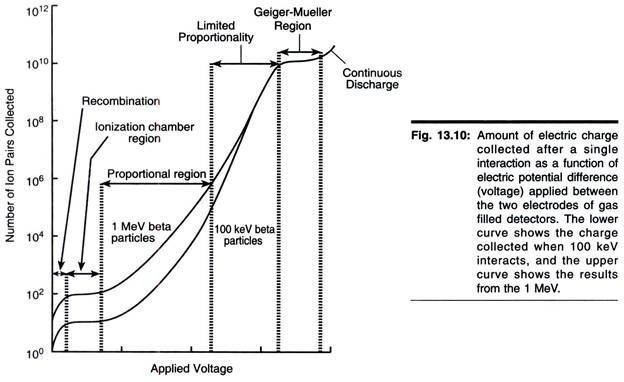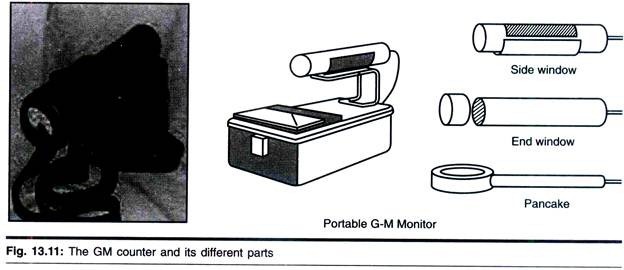The following points highlight the five eminent plant taxonomists. The taxonomists are: 1. John Hutchinson 2. Armen Takhtajan 3. Arthur Cronquist 4. Rolf M.T. Dahlgren 5. Robert Thome.
Contents
Taxonomist # 1. John Hutchinson (1884-1972):
John Hutchinson a British botanist from England, associated with the Royal Botanic Garden, Kew, proposed a phylogenetic system of classification, that in its basic principles somewhat paralleled that of Bessey He was mainly concerned with the classification of angiosperms.
His classification system first appeared in a 2-volume work, The Families of Flowering Plants, which underwent several revisions and the final treatment appeared in 1973. In 1969, he published Evolution and Phylogeny of Flowering Plants. His other work includes Genera of Flowering Plants.
John Hutchinson’s System of Classification:
According to Hutchinson’s classification, angiosperms were considered monophyletic in origin, which originated from some hypothetical proangiosperms.
Initially, the angiosperms were regarded to have evolved along two separate evolutionary lines, Herbaceae (including the predominantly herbaceous families derived from Ranales) and the Lignosae (including fundamentally woody representatives derived from Magnoliales).
The Monocotyledons were considered to have derived from the Ranales. Lignosae were further grouped into 54 Orders beginning with Magnoliales and ending with Verbenales while, Herbaceae were further grouped into 28 Orders beginning with Ranales and ending with Lamiales.
The Monocotyledons were divided into three distinct groups on the basis of the nature of the perianth – Calyciferae, Corolliferae and Glumiflorae. These were further divided into 29 Orders and 104 Families.
In the first publication (1926), the Dicotyledons included two Subclasses Archichlamydeae (petals free or absent) and Metachlamydeae (petals united). The former were further divided into 59 Orders and 213 Families while the latter were divided into 23 Orders and 51 Families. In the last revision (1973), little alteration was made in the system.
Lythrales was transferred from the Herbaceae to the Lignosae, under the Order Myrtales. Little alteration was made in Monocotyledons. Thus, there are 82 Orders and 343 Families of the Dicotyledons and 29 Orders and 69 Families of the Monocotyledons.
Principles of Hutchinson’s System of Classification:
Hutchinson’s plant classification was mainly based on the following principles :
(i) Evolution has generally been consistent, and it is both downwards and upwards and does not necessarily involve all organs at the same time.
(ii) The dicots are primitive to the monocots, and the shrubs and trees in any one genus or family are more primitive than herbs. At the same time in any one genus or family, the shrubs and trees are older in comparison with climbers.
(iii) Perennials are older than biennials and annuals.
(iv) The aquatic flowering plants are considered to have been derived from terrestrial ancestors.
(v) Spiral arrangement of vegetative and floral leaves is primitive to cyclic arrangement.
(vi) Simple leaves are more primitive than compound leaves.
(vii) Dioecious plants are more recent than monoecious, and bisexual flowers are primitive than unisexual flowers.
(viii) Aestivation types are evolved from contorted to imbricate to valvate.
(ix) Polymerous flowers (many-parted) precede oligomerous (few-parted) flowers and apetalous flowers have been derived from petalous flowers. Polypetaly in turn is more primitive to gamopetaly.
(x) Actinomorphy and hypogyny is primitive to zygomorphy and perigyny respectively. Epigyny is the most advanced condition.
(xi) Syncarpy is more advanced than apocarpy, while polycarpellary condition is advanced to the condition of a few carpels.
(xii) Flowers with many stamens are primitive to flowers with few stamens. Plants with fused anthers or filaments are advanced to those with separate anthers.
(xiii) Aggregate fruits are advanced to single fruits. As a rule, the capsule precedes the berry or drupe.
(xiv) Endospermic seeds with small embryo are older than non-endospermic seeds with large embryo.
Merits of Hutchinson’s System of Classification:
(a) Although Hutchinson’s system has been followed widely, it has provided a sound basis for the later phylogenetic systems of Oswald Tippo, Cronquist, Takhtajan and others. It is in conformity with the modern views of the phylogeny of angiosperms, as it considers the Ranales and Magnoliales as the starting points among dicots.
(b) The families and orders are of small size and comprise only very closely related taxa. The arrangement of families within the monocots has been particularly appreciated the world over.
(c) In this system, the monocots have been discussed after dicots.
Demerits of Hutchinson’s System of Classification:
(a) In this system the dicots have been divided into two major groups (Lignosae and Herbaceae) on the basis of their woody herbaceous evolutionary lines.
This is strongly objectionable, as later studies by Bailey, Sinnott and others on overall resemblances and critical anatomical studies have shown that, herbaceous habit has been derived from woody habit and the reverse has also occurred occasionally. Therefore, the two evolutionary lines cannot be considered distinct.
(b) The primary division on the basis of woody or herbaceous habitat has resulted into wide separation of families, which resemble one another rather closely on the basis of floral structure. Several herbaceous families in the Ranales are clearly related to the woody members of Magnoliales.
For example, herbaceous Umbelliferae is more closely related to and probably derived from the woody Comaceae and Araliaceae. Similarly, herbaceous Cruciferae is clearly derived from the predominantly woody Capparidaceae most probably via Cleomaceae.
(c) This system is not of much utility from the point of view of plant classification.
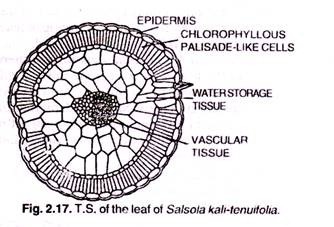 Taxonomist # 2. Armen Takhtajan (1910):
Taxonomist # 2. Armen Takhtajan (1910):
Armen Takhtajan who is the Head of the Department of Higher plants at the Komarov Botanical Institute in Leningrad, Russia, presented a system of classification, which was first published in a very preliminary form in 1942. The actual system however appeared in 1959 in German in his book Die Evolution der Angiosperm.
After 1966, this system has gone through a series of modifications and elaborations, but the nucleus of the system and the basic features remained essentially the same.
It was published in English in 1969 in Flowering Plants:
Origin and Dispersal.
A new version of the system has been published in Botanical Review recently in 1980. Takhtajan was inspired by Hailier’s attempt to create a synthetic evolutionary classification of flowering plants based on Darwinian philosophy and his approach is very much similar to that of Cronquist.
Armen Takhtajan’s System of Classification:
Takhtajan’s system of classification is basically of Bessey-Hallier tradition which considered all evidences from different fields including morphological, anatomical, embryological, cytological, palynological, paleobotanical, chemical and ultrastructural evidences while classifying Angiosperms.
He considered Angiosperms to be monophyletic in origin and that they arose from some ancient group of Gymnosperms. The Monocotyledons are, considered to have been derived from primitive Dicotyledons.
Takhtajan divided the Magnoliophyta (Angiosperms) into two Classes – Magnoliopsida (Dicotyledons) and Liliopsida (Monocotyledons), of which Magnoliopsida is considered primitive and Liliopsida to have been derived from Magnoliales under Magnoliopsida.
The two Classes have been further divided into 10 Subclasses, 7 under the Magnoliopsida and 3 under Liliopsida (1980), which are as follows:
However according to Takhtajan’s system of classification, 1997, the two Classes have been divided into 15 Subclasses, 11 under the Magnoliopsida and 5 under Liliopsida, which are as follows:
Among the Subclasses, Takhtajan considered Magnoliidae to be the most primitive, forming the basal group from which all other Subclasses have been derived (Fig. 7.2). Among the Magnoliopsida, he considered the Asteridae the most advanced.
The three Subclasses under Liliopsida (Alismatadae, Liliidae and Arecidae) are considered to be primitive than the other Subclasses of Magnoliopsida, and have been derived from Magnoliidae. Among the Angiosperms, the Winteraceae family is most primitive and Poaceae the most advanced.
Takhtajan’s system is based on 67 phyletic principles. Some of the important criteria used by him to evaluate the relative degree of advancement of flowering plants are as follows:
1. Woody plants are primitive than herbaceous plants.
2. Deciduous woody plants are considered evolved from evergreen plants.
3. Xylem fibers evolved from tracheids to libriform fibres, through fibre tracheids.
4. Trilacunar or pentalacunar nodes are primitive to unilacunar nodes.
5. Alternate leaf arrangement is primitive while parallel venation is most advanced.
6. Stomata with subsidiary cells are primitive than those lacking subsidiary cells.
7. Cymose inflorescence is primitive than racemose.
8. Flowers with an indefinite or variable number of floral parts are primitive.
9. Pollen with un-sculptured exine is primitive to sculptured pollen.
10. Apocarpous gynoecium is primitive.
11. Bitegmic ovules are primitive than unitegmic ovules, while anatropous ovule is most primitive.
12. 8-nucleated Polygonum type female gametophyte is most primitive.
13. Mesogamic and Chalazogamic conditions have evolved from Porogamic condition.
14. Among fruits many-seeded follicle is most primitive.
Merits of Takhtajan’s System of Classification:
Takhtajan’s system was not much cared of when it first appeared in 1959. However ever since its publication in the revised form in English in 1969, it has attracted the attention of the entire world and is considered one of the most satisfactory phylogenetic system, which is followed in many parts of the world.
This system is largely accepted mainly due to its clearly defined evolution principles and has the following plus points to its credit:
(a) The Dicots (Magnoliopsida) has been discussed prior to Monocots (Liliopsida).
(b) The families are small homogeneous units made up of closely related genera.
(c) The Dicots begin with Magnoliales; which is highly satisfactory as Magnoliales are universally considered to be the most primitive living Angiosperms.
(d) Among Monocots, the Alismatales, which are considered to be the most primitive living Monocots, have been placed at the starting point, which is, satisfactory.
(e) Engler and Prantl’s division of Dicots into two traditional groups – Archichlamydae and Metachlamydae, has been abolished in this system.
(f) Problems such as monophyly or polyphyly, interrelationships of Dicots and Monocots, primitive position of Magnoliales, the secondary nature of anemophilous families with reduced unisexual flowers, etc. have been satisfactorily settled.
Demerits of Takhtajan’s System of Classification:
(a) The main objection to Takhtajan’s system is his derivation of Monocotyledons from the stocks ancestral to the Nymphaeales.
(b) The extremely narrowly defined taxa in this system has resulted in the unwarranted splitting of related groups.
Taxonomist # 3. Arthur Cronquist (1919-1992):
Arthur Cronquist (1919-1992), an internationally renowned systematic botanist, was born on March 19, 1919, in San Jose, California. During his childhood itself, which was largely spent in Portland, Oregon and in Pocatello, Idaho, he became interested in the natural history of the mountain regions of the west.
He was greatly influenced by his mentor Professor Ray J. Davis after he joined the University of Idaho (now Idaho State University). He obtained a B.S. (1938) and M.S. (1940) degree from Utah State University where he also worked on the Aster foliaceus complex under the direction of Dr. Bassett Maguire who later became his colleague at The New York Botanical Garden.
Cronquist obtained his Ph.D. degree in 1944 from the University of Minnesota under the supervision of Dr. C. O. Rosenthal and joined the New York Botanical Garden in 1943. In between, during the periods of 1946-1948 and 1948-1951, he left the garden to teach botany at the University of Georgia and at Washington State University respectively.
He finally returned back to the Garden in 1952 where he was greatly influenced by Henry A. Gleason in floristics.
Jointly they published New Britton and Brown Illustrated Flora (1952), to which Cronquist contributed the section on the Asteraceae and Manual of Vascular Plants of Northeastern United States and Adjacent Canada (1963), which is an encyclopedic reference and field book, whose intellectual genealogy can be traced to Nathaniel Lord Britton and Addison Brown’s original Illustrated Flora of 1896-1898 and is known to botany students as the “Green Bible“.
He also jointly published another book entitled.
The Natural Geography of Plants (1964) with Henry Gleason. He also conducted extensive surveys throughout North America, and studied and collected plants of the intermountain regions of the western United States. These studies resulted in the publication of Intermountain Flora, with Arthur H. Holmgren, Noel H. Holmgren, and James L. Reveal as co-authors.
In the later 1950’s he began a correspondence and collaboration with the Armenian botanist, Armen Takhtajan, of the Komarov Institute in Leningrad, U.S.S.R. and associate biologists, which proved to be a critical stimulus in the development of his plant classification systems.
During this association, he also became proficient in Russian, and visited the (then) Soviet Union on several occasions, and promoted scientific exchanges between the two countries.
Cronquist carried out important administrative duties at the Garden and at its satellite facility, the Cary Arboretum as Director of Botany (1971-74) and Senior Scientist (1974-92). During this period, he also held faculty appointments at Columbia University and the City University of New York, where he served as part of the Executive Committee on Biology.
He was also professionally affiliated to many other organizations, which included the American Society of Plant Taxonomists (president, 1962), the Botanical Society of America (president, 1973), the International Association of Plant Taxonomy (council member), and the Torrey Botanical Club.
He was the proud recipient of many Professional awards and honors, which included the Leidy Medal of the Academy of Natural Sciences, Philadelphia (1970), honorary vice-president of the XII International Botanical Congress, Leningrad (1975), the Asa Gray Award (American Society of Plant Taxonomists, 1985), and the Medal for Botany, Linnean Society of London (1986).
He was a great botanist and educator and his advancement of taxonomy, plant systematics, and floristics was of lasting significance to the science of botany. He died on March 22, 1992 while, studying plant specimens in the herbarium of Brigham Young University in Utah.
Arthur Cronquist’s System of Classification:
Arthur Cronquist presented a system of classification for Dicotyledons in 1957, which was later modified and published in collaboration with two other eminent botanists in 1966. However the final modification appeared in 1988.
The system presented in his book Evolution and Classification of Flowering Plants is largely based on literature, personal observations and discussions with other botanists. His revised system appeared in his book An Integrated System of Classification of Flowering Plants in 1981.
This system of classification is an elaboration of Bessey’s system of classification and a refinement over Takhtajan’s system (1964), which is based on morphological, anatomical, embryological, palynological, serological, cytological, chemical as well as ultra structural evidences. According to Cronquist’s system of classification, the angiosperms have been divided into two Classes –
Magnoliopsida and Liliopsida, which have been further divided into Subclasses, Orders and Families. There are a total of 382 Families under the Angiosperms of which, 317 are under Magnoliopsida (Dicotyledons) and 65 under Liliopsida (Monocotyledons).
There are 6 Subclasses under Magnoliopsida and 5 under Liliopsida as shown below:
The Classification of Magnoliophyta According to Cronquist’s System:
Classification of flowering plant is an on-going scientific activity. Classification systems are conceptual structures that reflect interpretation of available data regarding evolutionary relationships. Since interpretations differ and new information’s are constantly emerging from many sources, there is no single, stable classification.
Pre-Darwinian classification systems either followed a metaphysical rationale, charting the Divine pattern of creation, or grouped flowering plants on the basis of abritrary (‘artifical‘) criteria. Later classification systems have largely focused on the determination of phylogenetic or evolutionary patterns, which consider a ‘model’ archaic or primitive type as a foundation from which modern groups have evolved.
The model and perspectives (primitive vs. derived or specialized) of Charles Bessey is followed by most current classification systems.
Regardless of perspective, all current systems treat the flowering plants as a two-parted entity, composed of the Dicots (Magnoliopsida) and Monocots (Liliopsida), both of which share a complex suite of features, and all data available indicate that these features were present in an ancestral, dicot-like plant.
Thus, the flowering plants appear to be monophyletic (both monocots and dicots evolved from a common ancestor) and the extant angiosperms most similar to the ancestral type are those that are placed in the basal dicot groups.
All taxonomic circumscriptions are based on common or ‘typical’ key characters. At the higher taxonomic ranks, critical evaluation of multiple key characters is very important. Since the two elements (Magnoliopsida and Liliopsida) of the Magnoliophyta diverged early in the evolutionary history of the group, they are fairly distinct.
Key characters used to circumscribe the two Classes in the Cronquist’s system are as follows:
1.Magnoliopsida:
In this system, the subclass Magnoliidae under the class Magnoliopsida, which, consists mainly of the families of the traditional Ranales, is regarded as the basal complex from which other angiosperms are considered to have been derived.
The Hamamelidae is considered to consist of a group of wind-pollinated families with reduced, chiefly apetalous flowers that are often borne in catkins (the traditional Amentiferae).
The families under Caryophyllidae have a strong tendency towards free-central placentation and have betalains (nitrogenous anthocyanins and anthoxanthins) in many of them. The Rosidae and Dilleniidae, which are morphologically very much similar, are regarded to be parallel groups. The Asteridae consists of the higher sympetalous families, which are mostly derived from the Rosidae (Fig. 7.3).
The key characters used to circumscribe the various Subclasses under the Class Magnoliopsida in the Cronquist’s system are as follows:
2. Liliopsida:
The two Classes Magnoliopsida and Liliopsida under Magnoliophyta have diverged early in the evolutionary history of the group and hence they are fairly distinct and, in terms of flowering plant identification, they represent the first level of recognition.
In the Class Liliopsida, the Alismatidae chiefly includes the aquatic members, whereas the other Subclasses includes those Families which typically have large often petiolate leaves, and usually are either arborescent or have flowers crowded into a spadix.
The Families under Commelinidae are characterized by floral reduction and are mostly wind-pollinated. The Liliidae includes the insect-pollinated members (Fig. 7.11).
The key characters used to circumscribe the two Classes include:
Merits of Cronquist’s System of Classification:
(a) Cronquist system of plant classification is completely a phylogenetic classification.
(b) Conquist has taken vast literature from different fields of science into consideration. His system is based on morphological, anatomical, embryological, palynological, serological, cytological, chemical as well as ultrastructural evidences.
(c) Synoptical keys for each group up to the family level are very much useful.
Demerits of Cronquist’s System of Classification:
(a) Cronquist system of classification at some level has shown too much reliance on single characters like centrifugal stamens, free-central placentation, etc.
(b) The arrangement of certain Families in Liliales has been strongly criticized, particularly the submergence of Amaryllidaceae into Liliaceae.
Taxonomist # 4. Rolf M.T. Dahlgren (1932-1987):
Rolf M.T. Dahlgren, Professor at the Botanical Museum of the University of Copenhagen, Denmark, proposed a new phylogenetic system of classification and presented a method of illustrating an angiosperm system as an imaginary phylogenetic shrub in transection (pig. 7.18), which first appeared in A Textbook of Angiosperm Taxonomy in 1974.
This system was however later revised and a revised system with a diagram was presented in 1975. A complete revision again appeared in 1980 wherein the author has stated that the new classification is still provisional.
Rolf M.T. Dahlgren’s System of Classification:
Dahlgren’s system of classification is based on characters drawn from several branches of botany including anatomy, embryology and chemistry. Dahlgren believed that none of the extant groups of flowering plants is ancestral to any present-day group.
He was of the view that the Angiosperms are of monophyletic origin and have evolved from one particular line of Gymnosperms. Among Dicotyledons, Magnoliiflorae was considered most primitive and among Monocotyledons, Alismatiflorae has been regarded as most primitive.
The Angiosperms (Magnoliopsida) represent a Class, which has been divided into two Subclasses, Magnoliidae and Liliidae, corresponding to the Dicotyledons and Monocotyledons.
Magnoliidae has been further divided into 24 Superorder’s, 80. Orders and 346 Families, while Liliidae has been divided into 7 Superorder’s, 26 Orders and 92 Families, as shown in the following table (Fig. 7.17):
The division of the Class Magnoliopsida into two main Subclasses, Magnoliidae and Liliidae has been considered somewhat arbitrary and would probably not stand a test according to cladistics methods.
However, Liliidae stands out as a possibly monophyletic group by virtue of their single cotyledon and characteristic triangular protein bodies in the sieve tube plastids, in addition to the less constant differences from Magnoliidae.
Dahlgren illustrated the angiosperm system as an imaginary phylogenetic shrub (Fig. 7.18) to depict the placement of variously shaped figures representing Orders close to one another which are similar in several characters, thus reflecting their presumably phylogenetic relationships.
The size of these figures correspond to the number of species in the Orders and the extensions of the figures to various directions indicate diversity of characters within them.
Merits of Dahlgren’s System of Classification:
(a) It is a modification of Takhtajan’s original plan taking into account additional data based on anatomy, embryology and chemistry.
(b) The Dicots (Magnoliopsida) have been discussed prior to Monocots (Liliopsida).
(c) The Angiosperm system has been illustrated as a phylogenetic shrub depicting the relation between Orders. The closely related Orders have been placed close to each other.
(d) Dahlgren (1980) has attempted to clarify most of the doubts and objections raised by Corner.
There will continue to be two distinct groups of investigators working in two widely different areas of taxonomic research i.e., one group which follows the basic philosophy of intensive investigation in limited groups like Prof. Corner, and the second group attempting extensive general purpose investigation.
Since their approaches are vastly different, there is bound to be controversial assessment of the results achieved by them.
Demerits of Dahlgren’s System of Classification:
(a) This classification includes unnatural Orders and Superorder’s.
(b) The nomenclature of various groups adopted by Dahlgren has been strongly criticized and the name “Pseudon” has been suggested for a conjectural taxon.
(c) Dahlgren did not consider the polyphyletic origin of Angiosperms from different Gymnosperms. He rather believed that the combination of several very characteristic attributes like companion cells in the phloem, 8-nucleate embryo sac, secondary endosperm, etc. would hardly have evolved independently in different gymnospermous groups.
Taxonomist # 5. Robert Thome’s (1983):
System of Classification:
Robert Thorne (1983) proposed a pure phylogenetic system of classification on the basis of characters of comparative morphology, cytology, embryology, paleobotany, plant geography, pollen and seed morphology, ultrastructure and host-parasite relationship.He also believed in the monophyletic origin of angiosperms.
He treats the flowering plants at the rank of Class with an initial bifurcation into two Subclasses (Fig. 7.21). Related Orders are placed within each Subclass as Superorder’s and within these, clusters of related Families are grouped into Suborders.
He divided the Class Angiospermae (Annonopsida) into 2 Subclasses – Dicotyledonae (Magnoliidae) and Monocotyledonae (Liliidae), which were further subdivided into 28 Superorders, 54 Orders, 73 Suborders, 350 Families, 12,255 genera and 2,25,490 Species.
A statistical summary of Thome’s system of classification is as follows (Fig. 7.20):
Merits of Thome’s System of Classification:
1. Annonales which forms the starting point of this system is universally accepted as the most primitive living angiosperms.
2. In this system, closely related taxa are by and large placed nearer to one another.
3. The Orders Malvales, Urticales, Rhamnales and Euphorbiales have been included under one Superorder Malviflorae, which is highly satisfactory.
4. The related Orders Cornales and Dipsacales have also been placed under one Superorder Corniflorae, which is also the merit of this system
5. The families of Amentiferae (a group of unrelated families) have been distributed into different Orders and the group Amentiferae has been abolished.
Demerits of Thome’s System of Classification:
(a) It is not of much practical utility in the identification of plants.
(b) Thome’s view that angiosperms might have originated from some Pteridospermous members in early Cretaceous times is not accepted by several taxonomists.
An outline of the revised Robert F.Thorne system of classification:
